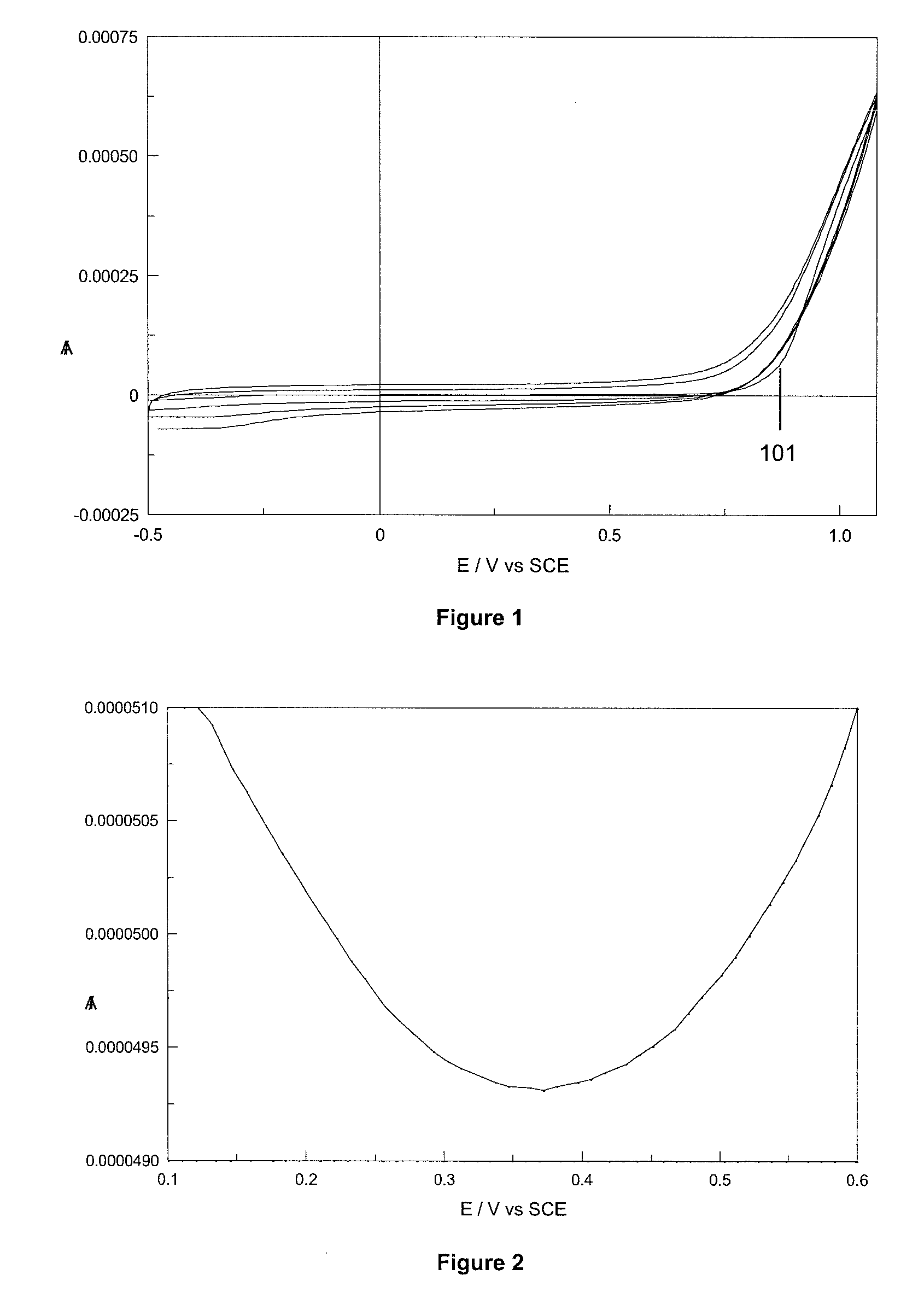Chemical messenger sensor
- Summary
- Abstract
- Description
- Claims
- Application Information
AI Technical Summary
Benefits of technology
Problems solved by technology
Method used
Image
Examples
Embodiment Construction
Electrode Preparation
[0060]The poor solubility of the 3,4-ethylene dioxythiophene (EDOT) monomer in aqueous solution, has led to the electropolymerisation of this monomer being predominantly performed in organic media.55 Surfactants, such as sodium dodecyl sulphate (SDS), have been reported to improve the solubility of EDOT in aqueous and organic media.7 In general, it has been communicated that a critical micellar concentration (cmc) of surfactant is required in solution if polymerisation of EDOT is to occur. Cyclodextrins (CDs) have been used in place of surfactants,8.9 owing to the ability of cyclodextrins to form a host guest interaction with EDOT, thus increasing the solubility of the EDOT monomer in water. In the example disclosed herein, sulfonated β-cyclodextrin (β-CD) was utilised as the dopant anion necessary for film formation to occur.
[0061]The films were electropolymerised onto gold electrodes from an aqueous solution of 0.1 M ethylenedioxythiophene and 0.01 M sulfonate...
PUM
| Property | Measurement | Unit |
|---|---|---|
| Electrical conductor | aaaaa | aaaaa |
Abstract
Description
Claims
Application Information
 Login to View More
Login to View More - R&D
- Intellectual Property
- Life Sciences
- Materials
- Tech Scout
- Unparalleled Data Quality
- Higher Quality Content
- 60% Fewer Hallucinations
Browse by: Latest US Patents, China's latest patents, Technical Efficacy Thesaurus, Application Domain, Technology Topic, Popular Technical Reports.
© 2025 PatSnap. All rights reserved.Legal|Privacy policy|Modern Slavery Act Transparency Statement|Sitemap|About US| Contact US: help@patsnap.com



